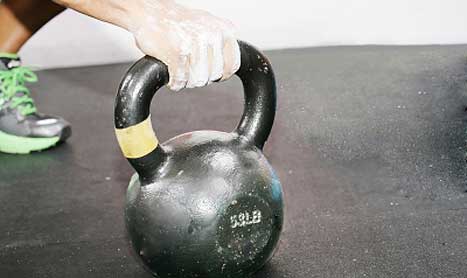 You may have seen a dangerous-looking cannonball with a handle on it at your gym – it’s actually a kettlebell. Originating from Russia in the 1700s, kettlebells are weighted balls that can provide a truly dynamic workout as they can be lifted and swung in a wide combination of moves.
You may have seen a dangerous-looking cannonball with a handle on it at your gym – it’s actually a kettlebell. Originating from Russia in the 1700s, kettlebells are weighted balls that can provide a truly dynamic workout as they can be lifted and swung in a wide combination of moves.
Previously used to train Olympic athletes and Russian Special Forces, an increasing number of personal trainers are now seeing the potential benefits of including kettlebells into workouts. Even celebrities such as Penelope Cruz, Angelina Jolie and Jessica Alba have jumped on the kettlebell bandwagon. Sound good so far? Read on to find out more:
The benefits of kettlebell training
- Including kettlebell training into your workouts can help with weight loss, improve balance and core stability, while also working on strength and conditioning.
- They’re portable so you can train indoors or outdoors.
- Kettlebells are great for functional training (performing movements similar to those you do in your everyday life).
- They train multiple muscles at once, working to tone and strengthen your whole body.
- Great for busy people with little time who want to get the most out of a short, intense workout.
The downsides of kettlebell training
- If you don’t know what you’re doing or use a heavier weight than you are ready for, you may injure yourself.
- As your core and stability are challenged, if you’re weak in these areas you will need to be more careful with your positioning when doing dynamic exercises than during your average weights workout.
- Kettlebells can be more expensive than your average dumbell so may not suit a beginning exerciser without access to a trainer who comes with the gear.
How to get started
Ask around your local gym and personal trainers to find someone who can train you in the safe use of kettlebells. You can even mix these weights into your regular workout to provide added variety if you don’t feel like it’s something you want to do just on its own.
If you’re purchasing your own kettlebell, as a rough guide, women of average size and strength should start out with an 8kg weight (though if you’re doing upper body exercises that mainly work the shoulders or triceps, this may be too heavy; movements can still be practiced with a lower weight dumbell to build strength to begin with). Even a low weight kettlebell used with explosive movements – such as swings and combining with plyometrics/jumps – can give you a great cardio workout.
It’s worthwhile purchasing a quality kettlebell – preferably cast iron as they are virtually indestructible! – as cheaper versions can cause injuries or even come apart after repetitive use if they’re filled with sand or similar.
For more information, visit www.kettlebellsnz.com and take a look at this video:
Image / FreeDigitalPhotos.net – David Castillo Dominici

